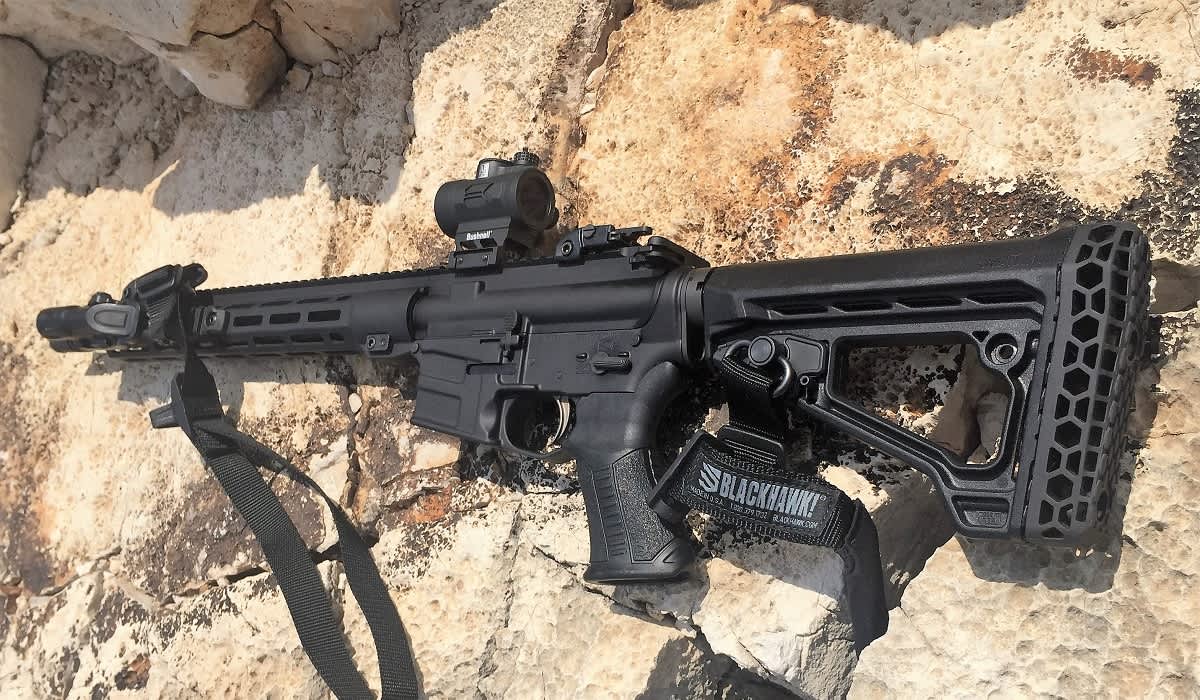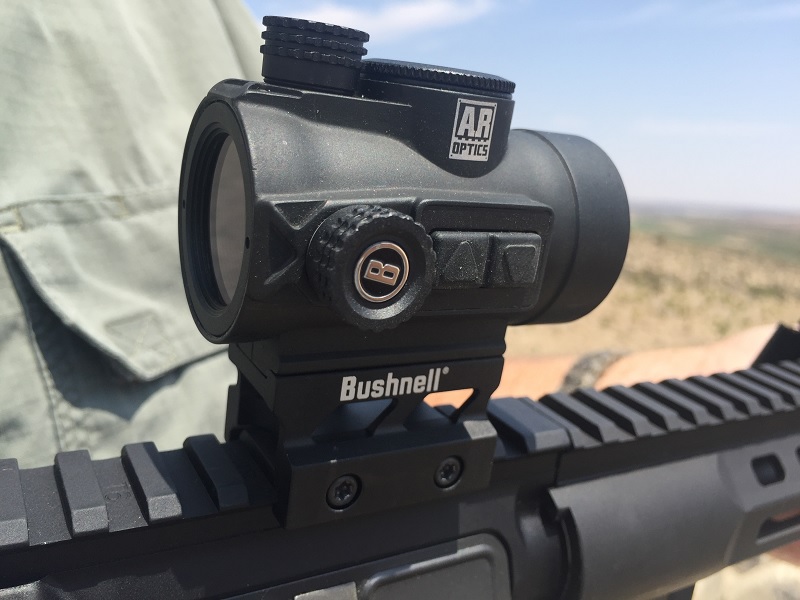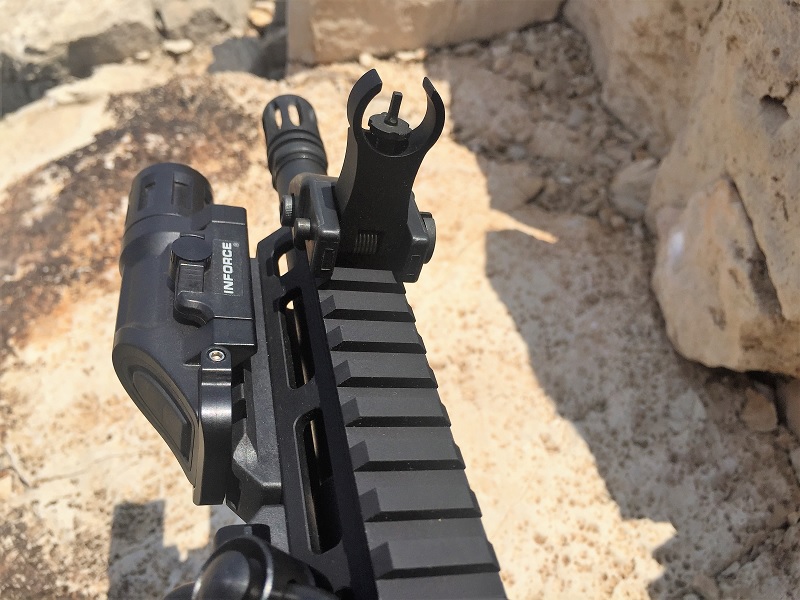Outfitting The Personal Defense Carbine
Eve Flanigan 04.24.19

Every year, more Americans purchase a personal defense carbine rifle, usually an AR15, for the purpose of home and vehicle defense. In doing so, they multiply the effectiveness of ballistic protection in comparison to a handgun. The higher velocities associated with rifle-caliber cartridges deliver far better performance than slower-moving handgun rounds. Even for those who opt for a pistol caliber carbine, ease of aiming and the resultant improvements in accuracy can make a longer gun a top choice for protecting home, family, and business.
For anyone looking to outfit their carbine for those purposes, the gun industry presents a dizzying array of choices of add-on accessories, all of which are purported to make your rifle perform better than it did off the shelf. But it really doesn’t take much to take a basic AR-style rifle from plinking mode to defense-ready status.
Chances are this gun will be retrieved, manipulated, and fired in tight quarters. Even if your living or working areas are spacious, the use of concealing features during a home invasion or armed robbery is just common sense—as well as confining where dealing with a gun is concerned. Here are my three favorite accessories that make my home defense long gun maximally safe and useful for personal defense.

A Rapid Aiming System
Accurate aim is critical. Iron sights are fine for daytime use, but being able to see sights in darkened conditions is a necessity. Magnification isn’t, since we’re talking about encounters that are relatively close—probably 100 yards or less.
A simple and compact red dot sight, either reflex (window) or tubular style, is an ideal companion for back-up iron sights. The light weight and good reliability of these sights make them ideal for quick deployment. Most do require a switch-on action to activate, but if you’re disciplined enough to change batteries three to four times per year without fail, it’s possible to leave most of these devices powered up and ready for service.

The AR I keep most handy has been wearing the TRS-26, a compact red dot by Bushnell for the past year. I love that its long battery life and small profile. Bushnell’s Enrage red dot, though a bit larger, is a personal favorite for easy operation. It’s on-off switch maintains a “memory” of sorts of the brightness setting most recently used, and one click of a dial turns the unit on. Its left-handed operation is a very sensible feature for a world in which most people are right handed, as it allows the primary arm to stay in position on the firearm as the other operates the light controls. Even though a piece of the shade cover cracked broke off in a relatively minor fall, this optic hasn’t missed a beat. Both optics take seconds to mount on a Pic or Weaver rail; both are ideal for the relatively close, zero-to-200 yards distance associated with self-defense shooting. Pick up either one for less than $160.
A Bright Enough Light Source
The safety rule “be sure of your target and what’s around it” can only be accomplished with certainly if there’s a light source. Prevent a tragedy and outfit your tactical long gun with a light.
“Bright enough” is, for most households, somewhere south of 700 on the lumens rating. More light is better if your interest is keeping a large property secure. But 1,000 lumens is more blinding than illuminating in the typical glass-rich, light-colored walls of American homes.

A sturdy mounting system and easy-to-use switch are essentials. The defensive carbine, with normal training, will get bumped around on unforgiving objects. Skimp on the lumen or candela rating, but not on the mount. My current fave is the no-wires setup called WML by Inforce. It’s ergonomic and using the switch requires just enough pressure to force the user to be cognizant of lighting up the area. At 400 lumens and $120, it’s in the sweet spot.
Sling It

There are those who disagree that a sling is wise for a gun that’s likely to be tucked away until an emergency, when it might get tangled. I have not found that to be the case, including when toting my carbine on the car seat headrest, locked into place in a handy Snap Rack by Lucid Optics. More commonly, I see sling-less students whose energy flags early on and who have trouble completing tasks other than shooting, all due to the lack of a sling.
“Home defense” is not all about the gun, of course. It might include herding kids or pets to safety, moving furniture, or other physical activity. A sling makes it possible for you maneuver while maintaining control and possession of your gun.
A two-point sling that can quickly go from a more snug carry position to a looser one for shooting is ideal, in my opinion. Single point slings are great until you need both hands on something else, at which point the muzzle becomes a patella-smacking pendulum. Taller friends may feel differently! For both of us, the Blackhawk Multi-Point Sling ($30) offers single- or double-point attachment with an easy switch, and a brilliantly designed thumb loop that makes on-the-run adjustments a gross motor activity. For a similar concept with some padding for extended patrols, check out the 2-Point Adjustable Sling by T3 Gear ($45).
Do what works
A strong industry marketing game and—let’s be honest—fashion trends sweep the gun gear arena every year. It’s tempting, and easier, to be a gear hound rather than a practitioner. Choose gear based on what will keep you operating a safely and simply as possible. Practice deploying your gun and gear and make the operation of your choice attachments second nature. The person who knows their gear, even if it’s substandard or old, usually prevails over the person who hasn’t figured out how to don a sling and run the pressure switch on his or her weapon-mounted light.

